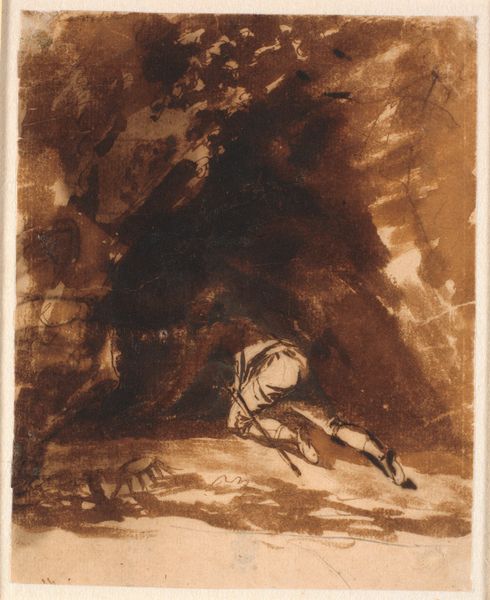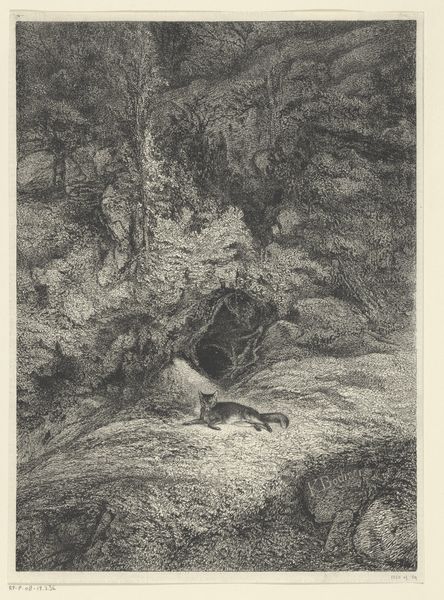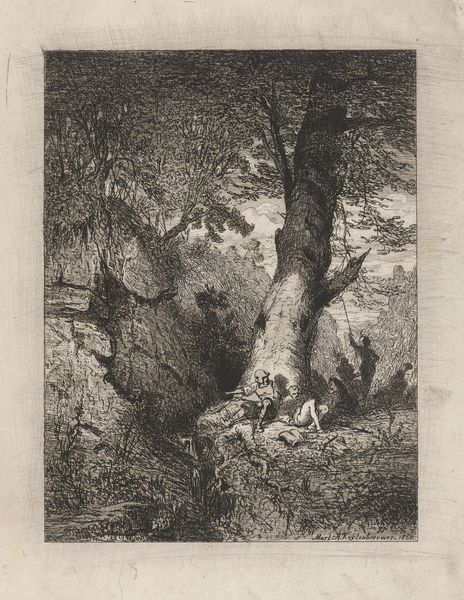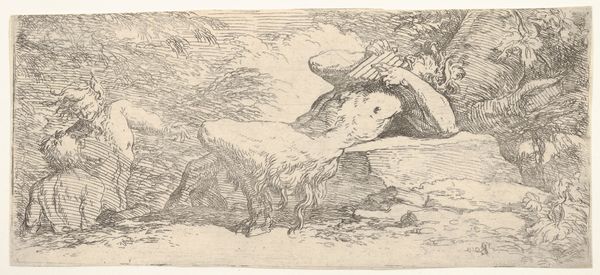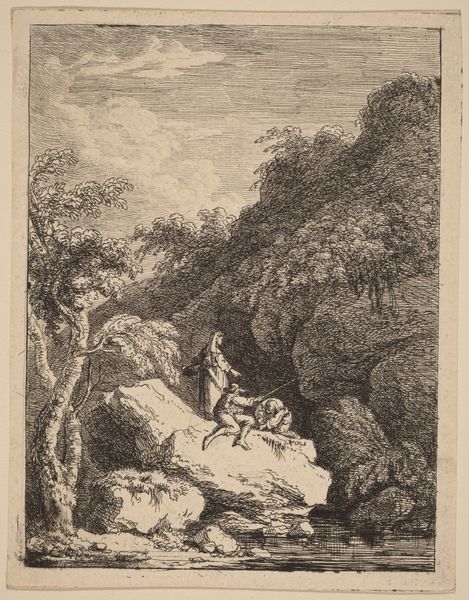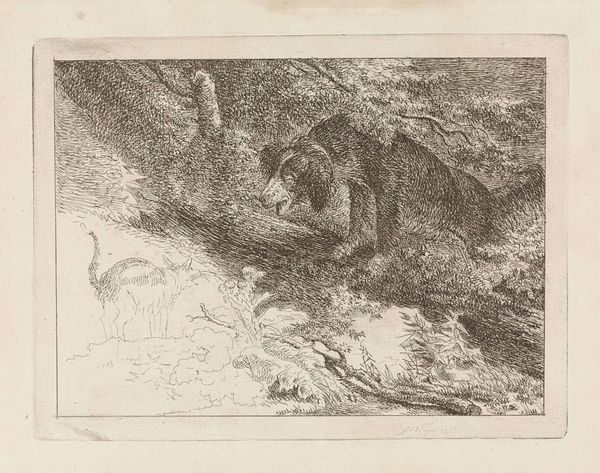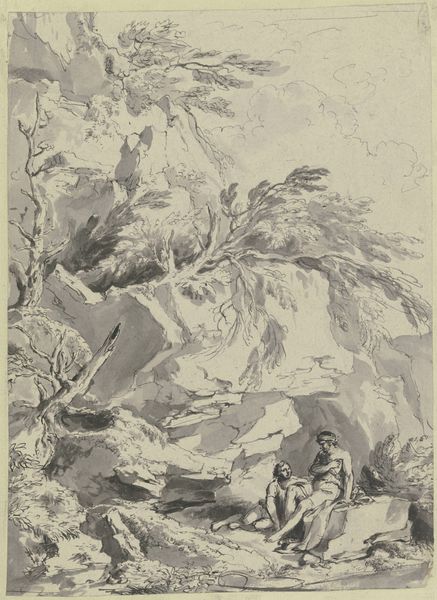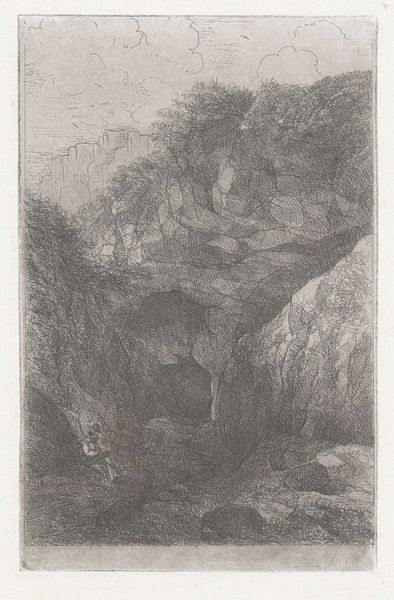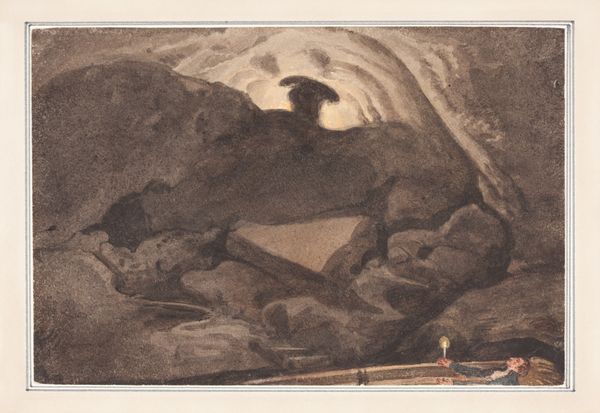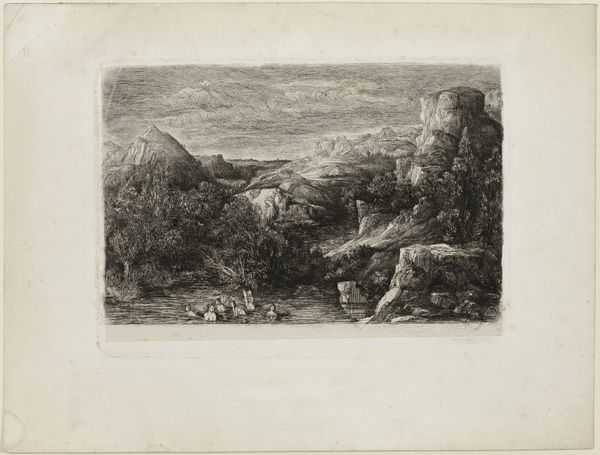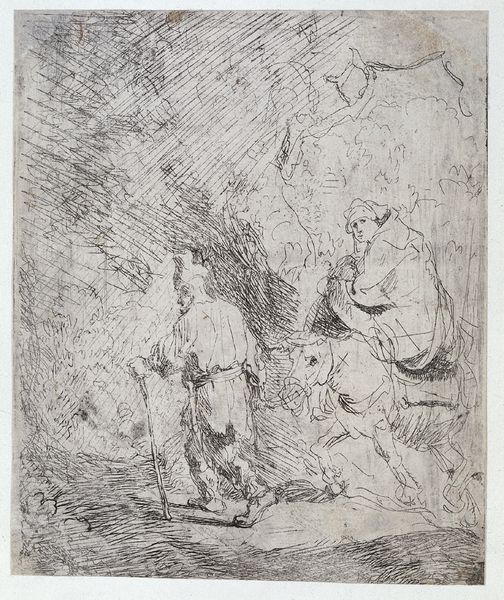
Dimensions: 156 mm (height) x 112 mm (width) (bladmaal)
Editor: This is "Niels Klim kryber ind i hulen" from 1788 by Nicolai Abildgaard. It’s rendered in ink, watercolor, and charcoal – a monochromatic drawing of a man crawling into a dark cave. The lighting really emphasizes the textures of the rock. What strikes you most about it? Curator: The first thing I notice is the clear stratification in the rock face. Abildgaard painstakingly renders this texture, hinting at the geological processes at play. But consider the implications of representing that labor, that natural "making," alongside human labor. It forces us to consider the value we assign to each, doesn’t it? Editor: I guess so. The textures are impressive. Do you mean, like, Abildgaard's work compared to nature's? Curator: Precisely! He’s consciously using his materials, ink and charcoal, to simulate the effects of millennia of geological activity. It’s not just representational; it’s about a translation of processes. And given the date, 1788, the era of enlightenment thought. What does it suggest that Niels Klim enters into the unknown, literally burying himself into the rock's historical depths? How does the materiality speak to its contemporary audiences? Editor: That's a really interesting take. I was so focused on the figure, but now I see the rock itself has agency almost. And by thinking about materials, it takes the making into a conversation with deep time. I never considered that before. Curator: Exactly. By carefully studying Abildgaard’s choice of materials and rendering techniques, we unlock layers of meaning beyond just the narrative. We see how materiality becomes integral to understanding the social and intellectual concerns of the time. Editor: Wow, I’ll never look at drawings the same way. Focusing on the "how" just opened up the whole picture.
Comments
No comments
Be the first to comment and join the conversation on the ultimate creative platform.
